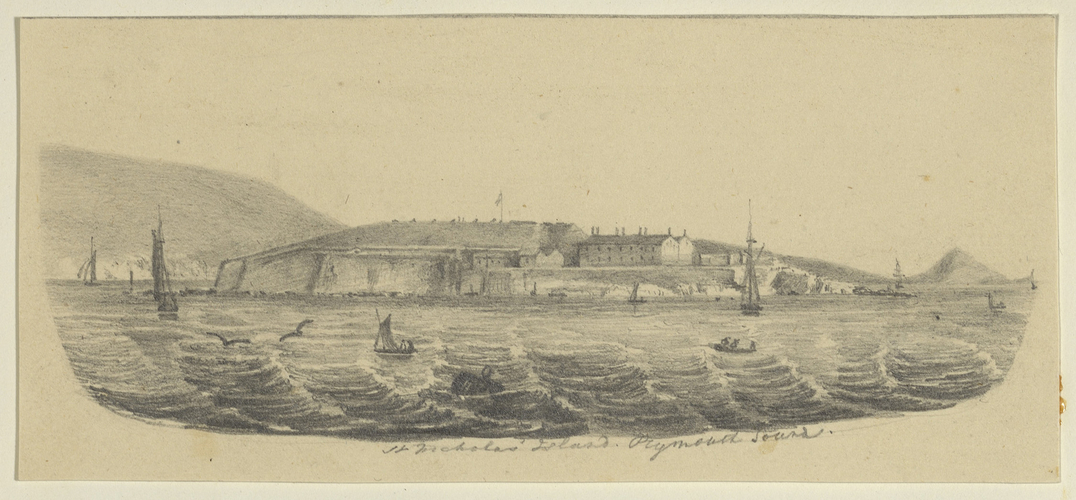In 1779 Great Britain was still embroiled in war against numerous nations across three continents. We were alone and without allies when a large French Fleet arrived off Cawsand Bay but was unable to land through a combination of bad weather and the arrival of a British flotilla. A parliamentary report stated only five guns were on the Island where another report states there were 21 x 32 Pounders and 2 x 18 Pounders. The difference may have been guns being rushed to the Island once the French were reported heading for Plymouth, however it was more luck than judgement that the landing was prevented and if the French had landed the defences of Plymouth and its Devonport Naval Base were likely to have been captured or severely damaged. This was possibly one of the reasons for a major revision of the defences of Plymouth and on the Island by Lt. Col. Matthew Dixon of the Corps of Royal Engineers in 1780. Another influence may have been a change in cannon manufacture from casting a hollow cannon to casting a solid cannon then reaming out to the bore size. This strengthened the cannon allowing a greater range with a smaller charge of gunpowder. Putting the cannon on higher ground also increased their range. At this point the Breakwater and the Breakwater fort were not yet thought of let alone built so the Island was really a key defensive point at the entrance to the Sound.
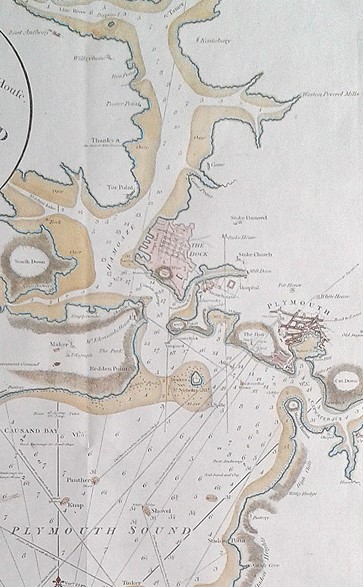
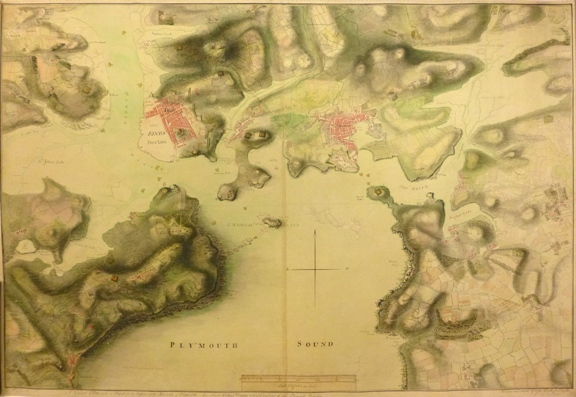
Lt Col Dixon’s report, made in 1780, took the view that the existing batteries defending the channels either side of the Island and the batteries on the Island itself needed to be upgraded and fields of fire integrated. Part of his report states “as the harbour of Plymouth became of importance to the Navy, several alternations were made to the batteries fronting the sound and the North Channel, as well as to the batteries on St. Nicholas Island; yet, I am of opinion, their united strength as established in preceding years, could not have defended the North and West Channels, without the aid of other batteries placed on high ground, to take ships in stern as they might attempt to penetrate the Harbour”. He also recommended floating or ships batteries at the entrance to the Sound. On the Island this meant the existing buildings on the top of the Island were demolished and replaced by a gun Battery, including magazines, facing south to cover the main entrance to the Sound and in line with his recommendation placed on the highest point of the Island.

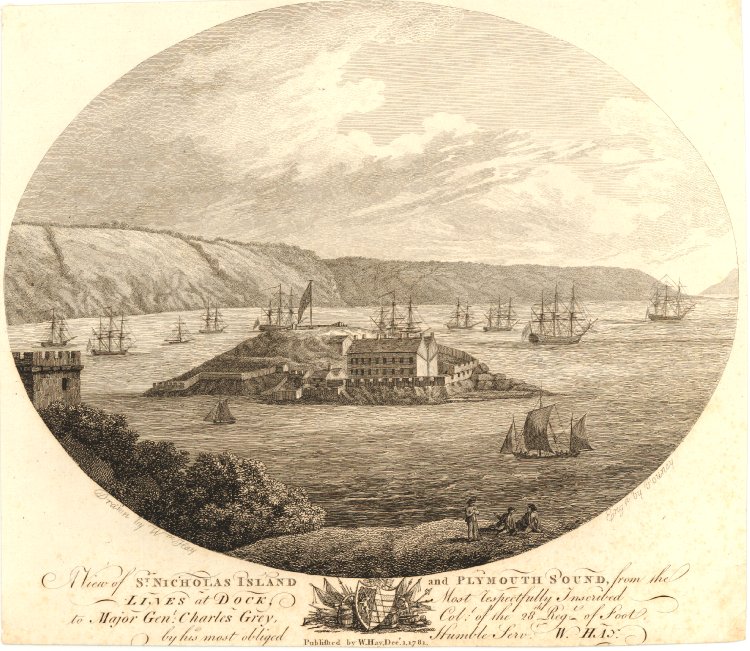
Work seems to have begun immediately as an engraving of 1781 shows the top of the Island devoid of any buildings. The maximum size of gun at the new battery would appear to be a 42 pounder as a 1780 report mentions 72 guns on the Island with a mix of 42, 32, 24, and 18 pounders in several batteries. Other works that appear to have been done at this time are some alterations to the outer defensive wall, an additional building near the current centre battery with the mast that served initially as extra barracks plus extensions to the Guardhouse and Master Gunners Quarters. Additional works and repairs were continued until at least 1790 throughout the Sound and on the Island. At this time a gun crew would have been 2 Artillery Officers, 2 Gunners and 6 Soldiers, however by 1800 this would have reduced to 5 Gunners per gun. This reduction in the number of men required per gun may account for the additional barracks being shown as a magazine for the Upper Battery from 1805. Although the American colonies were lost by now we were now involved with a continuing war against the French Empire and Napoleon Bonaparte, but crucially this time we had continental allies allowing Britain to be more offensively minded.
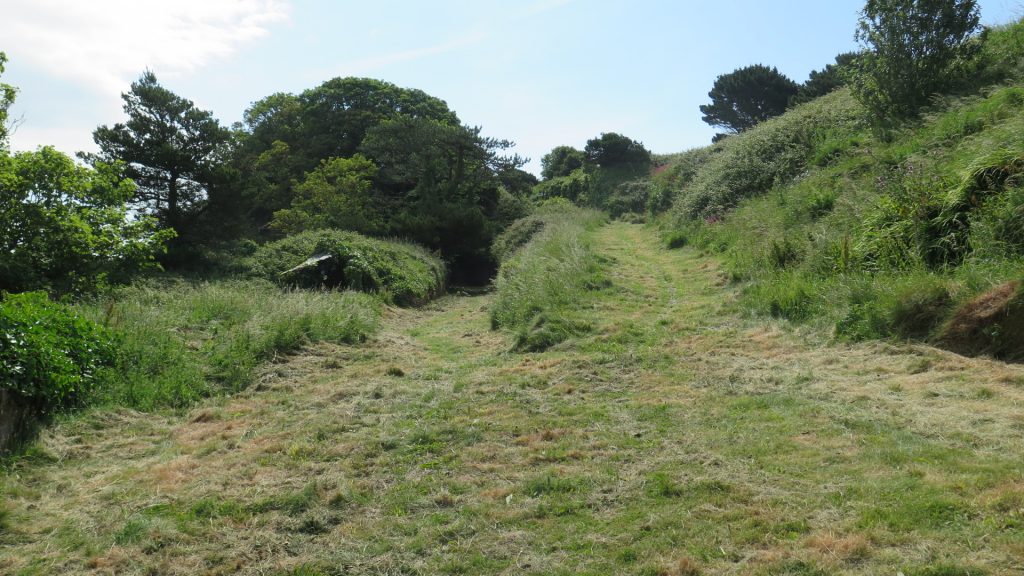

So by 1800 the Island is starting to take shape as we can now see it. The main parts of the current barracks and Governors or Island House have been constructed whilst the buildings on top of the Island have been demolished. The outer wall apart from a few later alterations is in place. The next major change came by 1846 when the remainder of the buildings as we now see them at the west of the Island were complete, then the addition of the Palmerston Battery or Napoleonic Casemates with their associated subterranean magazines which were complete by 1870 and finally the 3 Batteries of 3 Gun emplacements along the spine of the Island that were constructed by 1901. There were some additions during both World Wars but I’ll cover all of this over the coming weeks. Next week I’m going to start exploring the life of the Garrison on the Island. The 1800’s and up to about 1910 saw increased literacy and the mass production of newspapers. People travelled further and were keen on news from further afield. Although journalistic standards often meant repeating a story from a supposed eyewitness and was often uncorroborated they also carried all the movements of the Army and Navy, reported Court Martials, deaths and stories, letters and allegations all without censorship which shines a fantastic light on how folk lived their lives. It was, as with our current media and social media full of gossip. Also the trend of the previous century of people self-publicising by writing their own accounts of sometimes dubious scientific breakthroughs and heroism carried on as bids to gain fame and funding could be exposed to a new, literate audience. Amongst the stories I’ll be sharing over the coming weeks, along with continuing development of defences on the Island, are a duel, mutiny, brandy smuggling, theft and corruption, accusations of fraud and wizardry, a hoax on the Hoe involving an alleged flying machine plus numerous tales of shenanigans and heroism by the garrison.

